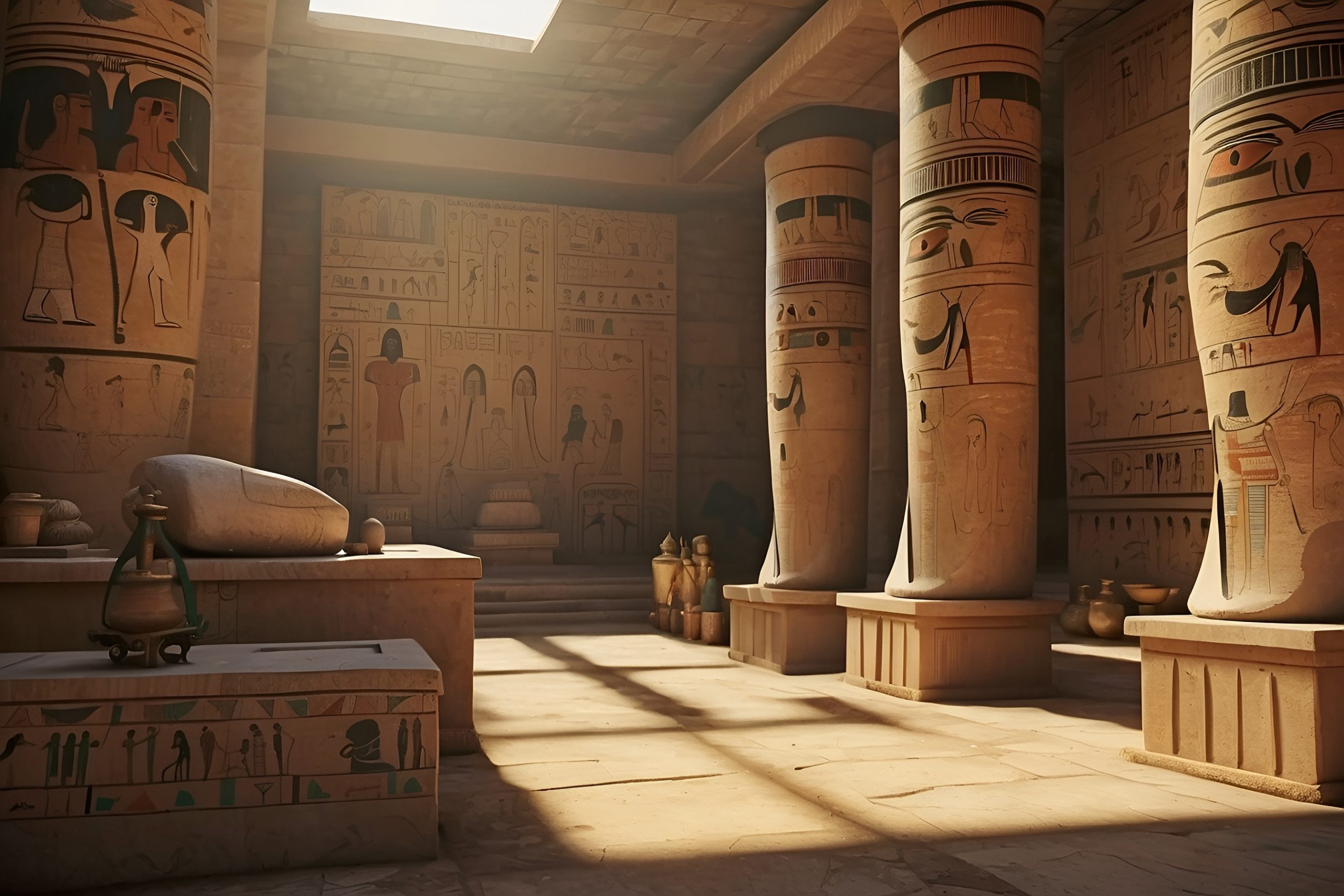The Creative Heritage of Ancient Egyptian Civilization”

By Dr. Hussein Abdel Basir
Ancient Egypt stands as one of the most magnificent and awe-inspiring civilizations in human history, renowned for its colossal architecture, intricate artistic works, and profound cultural achievements. At the heart of this inspirational civilization lies a legacy of creativity that continues to marvel and inspire to this day.
One aspect of creativity in ancient Egypt is undoubtedly its remarkable architecture. The iconic pyramids in Giza, built as tombs for the ancient Egyptian kings, stand as enduring symbols of Egypt’s greatness and innovation. These massive structures constructed thousands of years ago, still astound historians and engineers with their precision and scale. In addition to the pyramids, the ancient Egyptians excelled in building temples, palaces, and cities that reflected their religious beliefs, social organization, and technological prowess.

Arts and crafts were integral parts of ancient Egyptian culture, with craftsmen producing a stunning array of sculptures, paintings, and furniture. From beautiful statues of gods, kings, and queens to intricately decorated walls in temples, Egyptian artistic creativity captured imaginations and conveyed the richness of their beliefs and rituals. The meticulous craftsmanship evident in jewelry, pottery, and furniture attests to the dedication the Egyptians showed in achieving aesthetic and artisanal excellence.
Hieroglyphic writing was a fundamental part of ancient Egyptian culture, adorning the walls of temples, tombs, and monuments, and serving as a means to record historical events, religious texts, and administrative records. Deciphering the hieroglyphic writing in modern times unlocked a treasure trove of knowledge about ancient Egyptian civilization, providing invaluable insights into its culture, beliefs, and daily life.
Music and literature also flourished in ancient Egypt, with evidence of songs, poems, and hymns dating back thousands of years. Musical instruments such as the lyre, flute, and drums were played during religious ceremonies, feasts, and celebrations, while literature encompassed a variety of genres, including myths, proverbs, and instructional texts. These artistic expressions not only entertained but also aimed to preserve the cultural heritage and oral traditions of the ancient Egyptians.
Perhaps most intriguing is the spiritual and philosophical dimension of ancient Egyptian creativity. The concept of Ma’at, or cosmic order, was the hallmark of Egyptian society, guiding individuals in their moral behavior and social interactions. This profound worldview found expression in religious texts like the Book of the Dead, which aided the deceased in their journey to the afterlife, and in architectural landmarks like the sacred axis of temples, symbolizing the connection between the heavenly realm and the earthly world.
In conclusion, the creative heritage of ancient Egyptian civilization stands as a testament to the enduring power of human imagination and invention. Through its massive architecture, exquisite artistic works, and profound cultural achievements, the ancient Egyptians left an indelible mark on history, inspiring generations with their creativity, wisdom, and spiritual vision.



